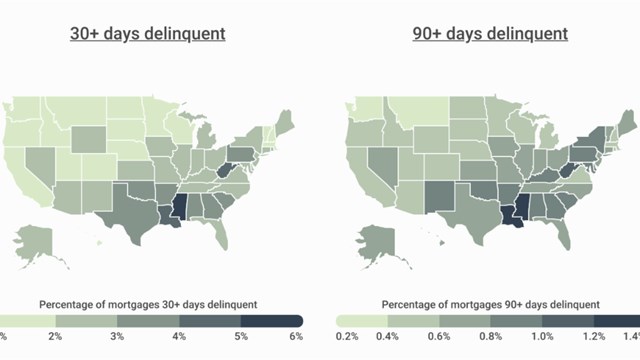As states and municipalities make moves to reopen their economies after weeks of quarantine torpor, the boards and management of multifamily communities nationwide are contemplating what their own reopenings are going to look like. The board of a smaller, self-managed urban walk-up building obviously has different concerns than the board of a sprawling suburban association with multiple shared amenities and entry points. Many administrators are looking for guidance on how to go about balancing residents’ understandable desire to resume some semblance of normalcy with concerns about the safety and health of those residents, as well as building staff and other employees.
To assist boards and property managers in this formidable task, Chicago-based international professional organization the Institute of Real Estate Management (IREM) released a 19-page PDF on April 30 titled IREM® Pandemic Guide For Real Estate Managers: Resources for Reopening Your Property. The guide supplements IREM’s other pandemic-related resources (you can access the organization’s full coverage here: irem.org/learning/coronavirus) and outlines the importance of fundamental concepts like clear communication and patience during the reopening process, and also includes thorough checklists for addressing concerns across a variety of properties and scenarios.
Below, you’ll find a selection of sections excerpted from the IREM guide—you can access the complete, printable PDF on IREM’s website. According to the guide’s introduction, boards, managers, and residents alike must keep in mind that “the information in this Guide is not intended to cover every situation. Users should seek advice from a qualified professional before applying any information contained in this Guide to their own particular circumstances. Users should always obtain appropriate professional advice on medical, legal, structural, organizational, personal, proprietary, public health, or professional issues.” Good advice in the simplest of times, but especially so now, with both the stakes and emotions running high.
From the IREM Pandemic Guide:
“Reopening your property responsibly and safely requires preparation, communication, and agility. It also requires coordination and cooperation with your stakeholders, including owners, staff, tenants/residents, and service providers. Consider the following key points on reopening your property:
“Follow public health department dates and guidelines. First in importance: reopening according to the dates, guidelines, and procedures of the public health department.
“Resist pressure from any of your stakeholders, including owners and tenants/residents, to deviate from those dates and guidelines. The financial impact of pandemics is typically severe, so you may face clients or tenants eager to get operations back to normal. Likewise, residents at multifamily communities may be eager to use the amenities available to them and enjoy the property to its fullest.
“However, you, your company, your client, your tenants/residents, and the property could be liable for reopening sooner than authorized or without adhering to safety guidelines, such as social distancing measures. Companies and properties could also face reputation impacts for deviating from guidelines.
“For COVID-19, many governments have released guidelines that reopen their countries in phases. They often provide guidance for different audiences, including employers and business operators, on policies and practices that mitigate the spread of the disease. State/province and local jurisdictions often provide more specific guidance, as well as reopening dates.
“You’ll need to get up to speed on all the guidance that applies to your property – and follow the most stringent precautions and procedures.
“Use clear and consistent communication. Another key consideration: communications to your staff and tenants/residents. You will likely have been communicating with them throughout the pandemic, and you should continue to be clear and consistent with what you’ve been doing into the phase of the pandemic where reopening becomes possible. That said, you’ll need to assess and reset as you go. Set clear expectations in advance, but be flexible to fit the fluid nature of this event.
“As you plan to reopen the property, you’ll need to work with staff and tenants/residents on roles and responsibilities. Do not make assumptions about who is responsible for supplying equipment or adjusting operations. Some of the responsibilities raised by reopening a property will probably not be addressed in the lease, so you need to do your homework.
“For example, if the health department or a tenant’s company requires temperature or health checks at the property entrance, who will supply the thermometers or temperature scanners?
“Who will do the screening as people enter the building? What party is liable if screening fails to prevent an outbreak? In this case, you would need to consult legal counsel, agree with the tenant on which party is responsible for the screening, and potentially secure equipment and/or service providers.
“Prepare. Preparation before reopening is critical. Different asset types will need different types of planning and preparation. The types of tenants and/or resident populations will also guide what you and your team will do for reopening day and beyond. Key areas of preparation include:
• Determining your role and liability in preventing the spread of disease
• Participating in planning with your stakeholders, including owner, tenants/residents, and service providers
• Coordinating with staff and service providers on an operating plan
• Setting a cleaning and sanitizing regimen
• Stocking enough cleaning and hygiene products
• Adding signage, barriers, and floor markings for social distancing
• Taking care of any deferred maintenance
• Performing preventive maintenance
• Readying equipment for startup
• Adjusting equipment for new operating conditions
• Making sure building systems support good indoor air quality (IAQ) and do not promote the spread of disease
• Planning for sanitary waste management practices
“Be flexible. It’s important to build flexibility into your planning. From the first day of the property’s reopening, you’ll need to observe whether the systems and processes in place are working as intended. Regular team meetings, where you assess what works and what doesn’t, continued virtually if necessary, can help you be nimble and make changes. So can listening to your stakeholders. Solicit their feedback—virtually, of course—and acknowledge their contributions.
“We’ve all seen how quickly things change and develop during a pandemic. Make sure you keep lines of communication with public health officials open, watch for any new guidance, and respond as conditions warrant.”
Additional Resources for Reopening Your Property
The IREM guide also provides several online and printable checklists to help property owners and administrators navigate the reopening process, including:
• A general checklist for all types of properties, divided into sections that include communication, disease prevention, operations, and maintenance
• Additional checklists with items specific to reopening industrial properties, office buildings, multifamily communities, and retail properties
• A workplace checklist for use in management and leasing offices and for tenants to use in their offices
The coming weeks and months will be a learning process for nearly everyone —and for boards and property managers, will present challenges and questions few (if any) have faced before in their respective roles. Fortunately, as public health experts, researchers, and frontline workers continue to labor round the clock to stop the virus and mitigate its detrimental effects, the real estate and multifamily management industry is also working to make as many helpful resources available as possible. The New Jersey Cooperator will continue to keep tabs on these as they become public, and will pass them along to our readership.
Cooper Smith is a staff writer/reporter for The New Jersey Cooperator.







Leave a Comment